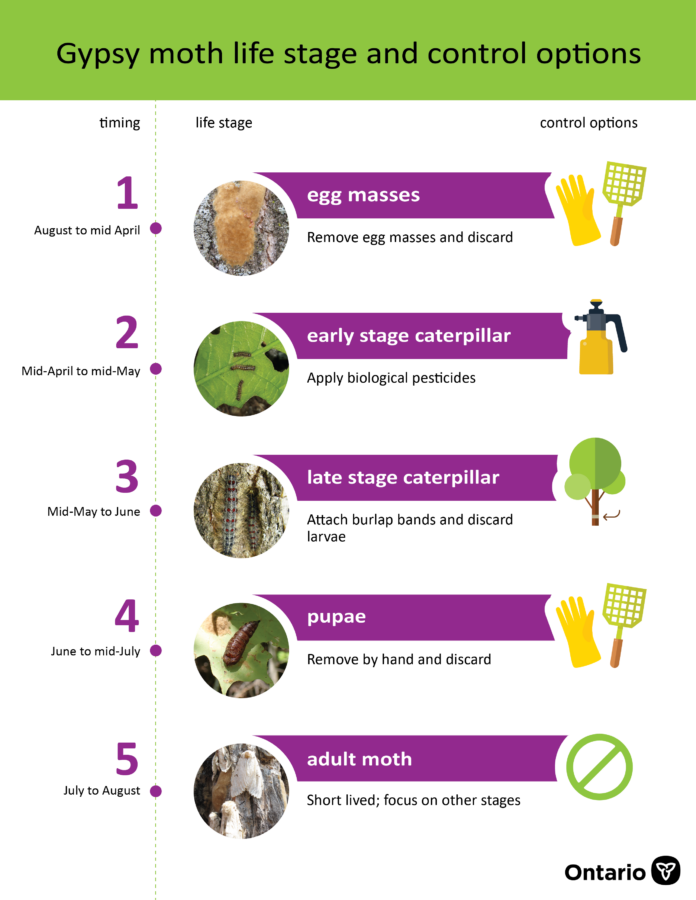This year’s gypsy moth outbreak has been devastating to local ecosystems across the province, as well as specifically in Waterloo, Ont. Previous attempts to eradicate the bugs using pesticides have been ineffective, so researchers are now using their knowledge of the moths’ biology to trap them.
The gypsy moth is an invasive species that first came to Ontario in the 1980s. In its caterpillar form, the insects eat a large amount of leaves and can destroy entire fields of trees and bushes. Some people even have allergic reactions to the caterpillars, which have been known to fall out of trees and land on people passing by.
Scientists have been exploring several creative solutions to remove the pests from Ontario. Rosemary Chong, a Waterloo chemist, said she intends to use her knowledge of pheromones to put a dent in the population.
“The female secretes a sex attractant and the male flies upwind to the female, they fertilize the female, and the female lays eggs,” Chong said in an interview with CTV. “So if male moths don’t find the females, we’ll have a lot less eggs that get hatched next year.”
This summer, Chong started creating lures with the goal of attracting the male moths and trapping them. Each lure consists of a rubber band that is soaked in the female gypsy moth pheromone and placed in a bottle of water. The males will be attracted to the pheromone and get stuck in the bottle, causing them to drown.
Chong made over 10,000 of these lures and distributed them among the Waterloo community in early July.
“If I can provide them so people can save their own precious trees, I’m all for that,” Chong said.
The caterpillars have been particularly devastating in the Waterloo, Guelph and Brantford regions. The region of Waterloo reported that the moths have been showing up more in the past two years than they have in decades.
Chong provided other tips for thinning out the population, including keeping an eye out for egg masses on trees later in the summer and removing them. With dedication from the community and Chong’s new lure traps, hopefully the moth population will reduce significantly.
“It’s not a magic bullet, it won’t get rid of everything,” Chong said. “All we are hoping for is that they will be reduced in numbers for next year.”
































